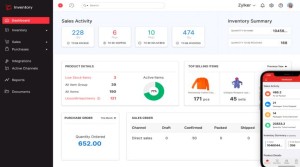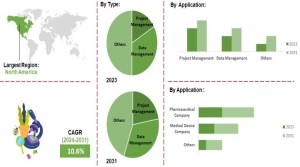How Long Do You Need to Walk After Meals?
Walking is an easy exercise that is gentle on your body. Almost everyone can do it, and you can walk fast or slow, depending on your fitness level.

Walking after meals, a practice often referred to as a "postprandial walk", has garnered attention for its numerous health benefits. This activity can help improve digestion, regulate blood sugar levels, and promote overall well-being. However, the best time to walk after eating can vary between people, depending on their health goals and physical condition.
Benefits of Walking After Meals
1. Improved Digestion
Walking stimulates the digestive tract, aiding food movement through the stomach and intestines. This can help ease indigestion, bloating, and constipation. The gentle movement helps start peristalsis, the wave like muscle action that pushes food through the digestive system.
2. Blood Sugar Regulation
Taking a walk after meals can significantly affect blood sugar levels, especially for people with diabetes or insulin resistance. When you exercise, your body uses up sugar from your blood. This helps to keep your blood sugar from going too high after you eat.
3. Cardiovascular Health
Walking regularly, even briefly after meals, is good for your heart. It can lower your blood pressure, help blood flow better, and reduce the risk of heart problems. Walking also helps keep your weight healthy, which is essential for your heart.
4. Mental Health Benefits
Walking can have a positive impact on mental well-being. It can reduce stress, improve mood, and enhance cognitive function. A walk after a meal can provide relaxation and mental clarity, promoting overall mental health.
Optimal Duration for Postprandial Walks
How long you should walk after eating depends on several factors, including how fit you are, what you want to achieve, and how much food you eat.
- 10-15 Minutes
A brief walk of 10-15 minutes can benefit digestion and blood sugar control. This duration is manageable for most people and can easily be incorporated into daily routines. It can help reduce the glycemic impact of a meal and support digestive processes without requiring a significant time commitment.
- 20-30 Minutes
For those looking to achieve more substantial health benefits, a walk of 20-30 minutes is recommended. This duration can provide a more pronounced effect on blood sugar levels and contribute to cardiovascular fitness. You can also stroll and enjoy it. This can help you feel better mentally.
- More than 30 Minutes
Walking for more than 30 minutes can be particularly beneficial for weight management and overall fitness. However, it may only be practical for some after every meal. This duration is ideal for individuals with specific fitness goals or those looking to incorporate more physical activity into their daily routines.
Practical Considerations for a Good Walk
Timing
It is generally recommended to start walking 10-15 minutes after finishing a meal. This allows the initial phase of digestion to begin and can help prevent discomfort.
Intensity
A moderate pace is ideal for postprandial walks. Walking too vigorously can lead to discomfort or indigestion, while a leisurely pace may not provide the desired health benefits.
Consistency
Regularity is vital to reaping the benefits of postprandial walks. Incorporating them into daily routines, such as walking after dinner, can help establish a healthy habit.
Here we will further explore the recommended duration for walking after meals, its benefits for weight loss, the structure of a walking program, and the advantages of walking as an exercise, and its role in overall fitness.
Walk and Metabolism
Walking after a meal can significantly aid indigestion. Walking increases your body's metabolism, which helps your digestive system work more efficiently. A moderate-paced walk for 15-30 minutes after meals can be beneficial. This duration can stimulate digestive enzymes and promote better digestion without putting undue strain on your body. Walking too vigorously immediately after eating may cause discomfort, so keeping the pace moderate is essential.
Walking for the Purpose of Weight Loss
Incorporating a walking routine after meals can be an effective strategy for weight loss. Walking helps to burn calories, and doing so after meals can prevent the body from storing excess calories as fat. Consistently walking after meals, especially with a balanced diet, can contribute to a caloric deficit, essential for weight loss. Studies have shown that short and frequent walks after meals can be more effective for weight management than a single and longer walk at another time of day. Aiming for 150-300 minutes of walking per week, spread across several sessions, can significantly aid in weight loss efforts.
Well Defined Walking Program
Establishing a structured walking program can help you reap the benefits of walking after meals. Start with a small goal, like taking a 10 to 15 minutes walk after each meal. As you get stronger, slowly increase the time you walk.
A well defined walking program can include the following.
-
Warm Up
Start with a 5 minutes warm-up by moving slowly to get your muscles ready.
-
Walking Session
Walk moderately for 15-30 minutes after each meal.
-
Cool Down
End with a 5 minutes cool down to gradually reduce your heart rate.
-
Consistency
Consistency is the key. Ensure you walk after every meal, making it a regular daily routine. Using a step counter or a fitness app can help you stay motivated and see how much you're improving.
Walking as an Exercise
Walking is an easy exercise that is gentle on your body. Almost everyone can do it, and you can walk fast or slow, depending on your fitness level. It strengthens the heart, reduces the risk of cardiovascular diseases, and improves overall cardiovascular health. As a weight-bearing exercise, walking also enhances bone density, reducing the risk of osteoporosis. Additionally, it can improve mood and mental health by releasing endorphins and reducing stress levels.
Walking for Gaining Fitness
Walking is a simple exercise that you can easily do with other workouts. Health experts say that to stay fit, you should walk for at least 150 minutes each week at a steady speed or 75 minutes at a faster speed. Walking often helps your heart and lungs, increases your stamina, and makes your joints more flexible. It also lowers stress and make you feel happier by releasing feel good chemicals called endorphins.
Walking regularly, even for short periods after meals, is good for your heart. It can lower your blood pressure, improve blood flow, and reduce the risk of heart problems. Walking also helps keep your weight healthy, which is important for your heart. If you're new to exercising, walking is a gentle way to start and can help you gradually move on to more challenging exercises.
Also read the following related posts.
- How Lemon Juice Detox the Body?
- Health Benefits of Cold Pressed Juices
- Why Maintaining a Healthy BMI is Crucial?

Walking after meals, a practice often referred to as a "postprandial walk", has garnered attention for its numerous health benefits. This activity can help improve digestion, regulate blood sugar levels, and promote overall well-being. However, the best time to walk after eating can vary between people, depending on their health goals and physical condition.
Benefits of Walking After Meals
1. Improved Digestion
Walking stimulates the digestive tract, aiding food movement through the stomach and intestines. This can help ease indigestion, bloating, and constipation. The gentle movement helps start peristalsis, the wave like muscle action that pushes food through the digestive system.
2. Blood Sugar Regulation
Taking a walk after meals can significantly affect blood sugar levels, especially for people with diabetes or insulin resistance. When you exercise, your body uses up sugar from your blood. This helps to keep your blood sugar from going too high after you eat.
3. Cardiovascular Health
Walking regularly, even briefly after meals, is good for your heart. It can lower your blood pressure, help blood flow better, and reduce the risk of heart problems. Walking also helps keep your weight healthy, which is essential for your heart.
4. Mental Health Benefits
Walking can have a positive impact on mental well-being. It can reduce stress, improve mood, and enhance cognitive function. A walk after a meal can provide relaxation and mental clarity, promoting overall mental health.
Optimal Duration for Postprandial Walks
How long you should walk after eating depends on several factors, including how fit you are, what you want to achieve, and how much food you eat.
- 10-15 Minutes
A brief walk of 10-15 minutes can benefit digestion and blood sugar control. This duration is manageable for most people and can easily be incorporated into daily routines. It can help reduce the glycemic impact of a meal and support digestive processes without requiring a significant time commitment.
- 20-30 Minutes
For those looking to achieve more substantial health benefits, a walk of 20-30 minutes is recommended. This duration can provide a more pronounced effect on blood sugar levels and contribute to cardiovascular fitness. You can also stroll and enjoy it. This can help you feel better mentally.
- More than 30 Minutes
Walking for more than 30 minutes can be particularly beneficial for weight management and overall fitness. However, it may only be practical for some after every meal. This duration is ideal for individuals with specific fitness goals or those looking to incorporate more physical activity into their daily routines.
Practical Considerations for a Good Walk
Timing
It is generally recommended to start walking 10-15 minutes after finishing a meal. This allows the initial phase of digestion to begin and can help prevent discomfort.
Intensity
A moderate pace is ideal for postprandial walks. Walking too vigorously can lead to discomfort or indigestion, while a leisurely pace may not provide the desired health benefits.
Consistency
Regularity is vital to reaping the benefits of postprandial walks. Incorporating them into daily routines, such as walking after dinner, can help establish a healthy habit.
Here we will further explore the recommended duration for walking after meals, its benefits for weight loss, the structure of a walking program, and the advantages of walking as an exercise, and its role in overall fitness.
Walk and Metabolism
Walking after a meal can significantly aid indigestion. Walking increases your body's metabolism, which helps your digestive system work more efficiently. A moderate-paced walk for 15-30 minutes after meals can be beneficial. This duration can stimulate digestive enzymes and promote better digestion without putting undue strain on your body. Walking too vigorously immediately after eating may cause discomfort, so keeping the pace moderate is essential.
Walking for the Purpose of Weight Loss
Incorporating a walking routine after meals can be an effective strategy for weight loss. Walking helps to burn calories, and doing so after meals can prevent the body from storing excess calories as fat. Consistently walking after meals, especially with a balanced diet, can contribute to a caloric deficit, essential for weight loss. Studies have shown that short and frequent walks after meals can be more effective for weight management than a single and longer walk at another time of day. Aiming for 150-300 minutes of walking per week, spread across several sessions, can significantly aid in weight loss efforts.
Well Defined Walking Program
Establishing a structured walking program can help you reap the benefits of walking after meals. Start with a small goal, like taking a 10 to 15 minutes walk after each meal. As you get stronger, slowly increase the time you walk.
A well defined walking program can include the following.
-
Warm Up
Start with a 5 minutes warm-up by moving slowly to get your muscles ready.
-
Walking Session
Walk moderately for 15-30 minutes after each meal.
-
Cool Down
End with a 5 minutes cool down to gradually reduce your heart rate.
-
Consistency
Consistency is the key. Ensure you walk after every meal, making it a regular daily routine. Using a step counter or a fitness app can help you stay motivated and see how much you're improving.
Walking as an Exercise
Walking is an easy exercise that is gentle on your body. Almost everyone can do it, and you can walk fast or slow, depending on your fitness level. It strengthens the heart, reduces the risk of cardiovascular diseases, and improves overall cardiovascular health. As a weight-bearing exercise, walking also enhances bone density, reducing the risk of osteoporosis. Additionally, it can improve mood and mental health by releasing endorphins and reducing stress levels.
Walking for Gaining Fitness
Walking is a simple exercise that you can easily do with other workouts. Health experts say that to stay fit, you should walk for at least 150 minutes each week at a steady speed or 75 minutes at a faster speed. Walking often helps your heart and lungs, increases your stamina, and makes your joints more flexible. It also lowers stress and make you feel happier by releasing feel good chemicals called endorphins.
Walking regularly, even for short periods after meals, is good for your heart. It can lower your blood pressure, improve blood flow, and reduce the risk of heart problems. Walking also helps keep your weight healthy, which is important for your heart. If you're new to exercising, walking is a gentle way to start and can help you gradually move on to more challenging exercises.
Also read the following related posts.
- How Lemon Juice Detox the Body?
- Health Benefits of Cold Pressed Juices
- Why Maintaining a Healthy BMI is Crucial?
Conversation
Latest Blogs
© Blog CoolCalculator, Explore CoolCalculator, your destination for the latest insights, tips, and updates on the world of online calculators. Stay informed and make your calculations smarter with our blog. ,
Designed
by Saad Media Team , Team Lead M.Rizwan Akhtar












